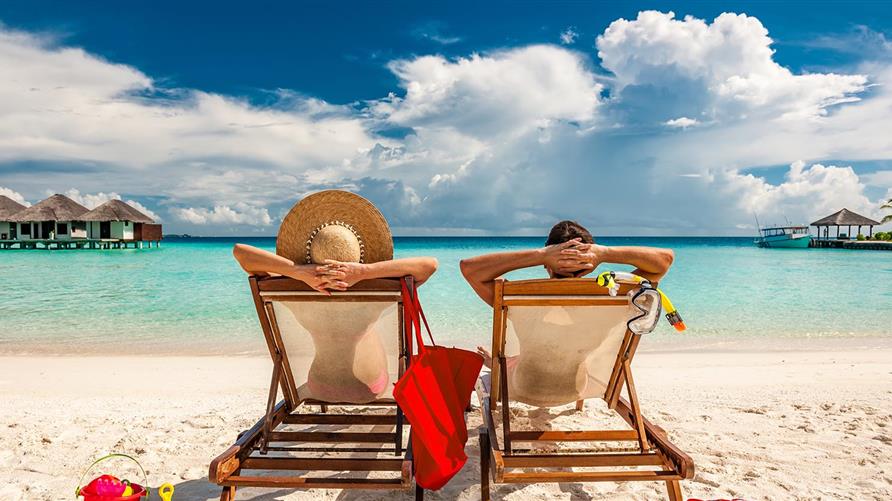Retirement vacation ideas abound, offering a diverse range of experiences tailored to every retiree’s unique preferences and budget. Whether you envision adventurous expeditions across rugged terrains, tranquil escapes to serene destinations, or enriching cultural explorations through historical sites, the possibilities are endless. This guide delves into various options, providing practical tips and inspiring ideas to help you plan the perfect retirement getaway, ensuring a memorable and fulfilling experience.
From budget-friendly escapes to luxurious getaways, we explore diverse travel styles, including adventure tourism, relaxing retreats, cultural tours, and family vacations. We’ll examine practical considerations such as travel insurance, cost-saving strategies, and choosing accommodations suitable for retirees. We’ll also discuss how to maximize your experience through smart planning and mindful choices, ensuring your retirement vacation is truly unforgettable.
Budget-Friendly Retirement Vacation Ideas
Planning a fulfilling retirement vacation doesn’t require breaking the bank. Many destinations offer incredible experiences without the hefty price tag. Careful planning and a little creativity can lead to memorable trips that fit comfortably within a modest budget. This section details several budget-friendly options and strategies for saving money on your retirement getaway.
Five Budget-Friendly Retirement Vacation Itineraries (Under $2000)
These itineraries are estimates and can vary based on the time of year, specific choices, and unforeseen circumstances. Prices are approximate and assume travel for one person. Adjustments for couples or longer trips should be made accordingly.
| Destination | Flights (approx.) | Accommodation (approx.) | Activities (approx.) |
|---|---|---|---|
| Charleston, South Carolina (4 days/3 nights) | $300 (domestic flight) | $450 (Airbnb or budget-friendly hotel) | $450 (historical walking tours, carriage rides, exploring the market) |
| Acadia National Park, Maine (4 days/3 nights) | $400 (domestic flight or driving distance depending on origin) | $300 (camping or budget-friendly cabin) | $300 (hiking, scenic drives, exploring Bar Harbor) |
| Savannah, Georgia (4 days/3 nights) | $350 (domestic flight) | $500 (charming bed and breakfast or budget hotel) | $400 (historic district walking tours, ghost tours, riverboat cruise) |
| Asheville, North Carolina (4 days/3 nights) | $400 (domestic flight) | $400 (Airbnb or budget-friendly hotel) | $400 (exploring the Biltmore Estate, hiking in the Blue Ridge Mountains, brewery tours) |
| National Parks Road Trip (7 days/6 nights – requires personal vehicle) | $0 (using personal vehicle) | $700 (camping throughout the trip) | $600 (entrance fees, gas, groceries) |
Creative Ways to Reduce Travel Expenses for Retirees
Planning ahead is crucial for saving money. Here are some effective strategies:
Consider traveling during the off-season or shoulder seasons (spring and fall) to avoid peak pricing and crowds. For example, visiting popular beach destinations in the spring or fall often results in lower airfare and hotel rates. Similarly, visiting national parks during the weekdays or early mornings can reduce congestion and the need for more expensive lodging options.
Embrace alternative accommodation options. Instead of hotels, explore options like Airbnb, VRBO, or even camping to significantly reduce lodging costs. Airbnb and VRBO often offer fully equipped kitchens, allowing you to prepare some meals, further reducing expenses. Camping provides an even more budget-friendly option, allowing you to experience nature while saving significantly on accommodation.
Take advantage of free activities. Many destinations offer free or low-cost attractions, such as hiking trails, parks, museums on free admission days, and historical sites. Planning your itinerary around these free activities can substantially reduce your overall spending. Researching local events and festivals can also uncover free entertainment options. For example, many towns and cities host free concerts or outdoor movie screenings during the summer months.
Advantages and Disadvantages of Using Rewards Points and Travel Miles for Retirement Trips
Rewards programs offer a potential avenue for significant savings on travel expenses. However, careful consideration of the program’s terms is necessary.
Advantages include the potential for substantial discounts or even free flights and accommodations. Accumulating points over time through everyday spending can lead to significant savings on future trips. For example, a retiree who consistently uses a rewards credit card for everyday purchases could accumulate enough points for a free flight or hotel stay within a few years. Many airlines and hotels offer partnership programs with other companies, allowing you to earn points from various sources.
Disadvantages include the potential for points to expire if not used within a specific timeframe. The value of points can fluctuate, and sometimes redeeming them may not result in the best possible deal compared to purchasing travel directly. The terms and conditions of reward programs can be complex, requiring careful review to understand limitations and restrictions. Furthermore, booking exclusively through reward programs might limit flexibility and choice in terms of travel dates and destinations.
Adventure Travel for Retirees
Retirement doesn’t mean the end of adventure; it’s a chance to explore the world with a newfound freedom. Many retirees find that embracing adventurous travel enhances their physical and mental well-being, creating lasting memories and enriching their lives. This section details various adventure travel packages designed to cater to different fitness levels, emphasizing safety and sustainability.
Adventure Packages for Varying Fitness Levels
Adventure travel packages should be tailored to match individual capabilities. Ignoring fitness levels can lead to injury and detract from the enjoyment of the trip. The following outlines three packages: one for beginners, one for intermediate adventurers, and one for those seeking a more challenging experience.
- Beginner Package: Gentle Exploration of Costa Rica. This seven-day package focuses on low-impact activities in beautiful natural settings. Activities include guided nature walks through rainforest trails, gentle kayaking on calm rivers, and visits to wildlife sanctuaries with minimal physical exertion. Participants will enjoy the vibrant culture and stunning scenery of Costa Rica without strenuous physical demands.
- Intermediate Package: Hiking and Kayaking in the Scottish Highlands. This ten-day itinerary involves moderate hiking on well-maintained trails in the Scottish Highlands, interspersed with sea kayaking excursions in sheltered bays. Participants should be comfortable with moderate daily hikes of up to 6 miles and be able to handle basic kayaking maneuvers. The package includes opportunities for wildlife spotting and experiencing the rich history and culture of Scotland.
- Advanced Package: Trekking in Nepal’s Annapurna Region. This challenging fourteen-day trek requires a good level of fitness and prior trekking experience. Participants will be ascending to altitudes of up to 12,000 feet, navigating varied terrain, and experiencing the breathtaking scenery of the Annapurna region. This package requires a high level of physical endurance and acclimatization to altitude.
Travel Insurance and Necessary Precautions
Securing comprehensive travel insurance is paramount for adventurous retirement vacations. Unexpected events, such as medical emergencies, trip cancellations, or lost luggage, can significantly impact a trip. A robust policy should cover medical expenses, emergency evacuation, trip interruption, and lost belongings. Beyond insurance, retirees should consult their physicians before embarking on strenuous activities, ensuring they are physically fit for the chosen adventure. Packing appropriate clothing, footwear, and gear is also crucial, along with familiarizing oneself with the local environment, weather conditions, and potential risks. Pre-trip briefings and guided tours can minimize potential hazards. For example, a pre-trek briefing in Nepal might cover altitude sickness prevention, appropriate clothing, and emergency procedures.
Benefits of Eco-Friendly and Sustainable Adventure Travel
Choosing eco-friendly and sustainable adventure travel options offers significant benefits, both for the environment and for the traveler’s experience. Sustainable tourism minimizes the negative impact on local ecosystems and communities, preserving natural beauty for future generations. Eco-conscious operators often prioritize local communities, supporting their economies and cultures. For example, choosing a lodge that uses solar power and employs local guides contributes directly to the local economy and reduces the carbon footprint of the trip. Travelers can also reduce their impact by minimizing waste, respecting wildlife, and supporting businesses that prioritize environmental protection. This approach enhances the overall travel experience, offering a more meaningful and enriching connection with the destination.
Relaxing Retirement Getaways
Retirement offers a wonderful opportunity to prioritize relaxation and rejuvenation. Choosing a tranquil destination for your getaway can significantly enhance the restorative benefits of your time off, allowing you to return home refreshed and revitalized. This section explores several idyllic locations perfect for a peaceful and pampering retirement escape.
Relaxing Vacation Scenarios
Several destinations offer unique opportunities for a truly relaxing retirement vacation. Consider these carefully curated examples, each providing a different flavor of tranquility:
- Bali, Indonesia: Imagine waking to the sounds of gentle waves lapping the shore from your private villa nestled amidst lush rice paddies. Spend your days indulging in traditional Balinese massages, exploring serene temples, and practicing yoga overlooking the ocean. Evenings could be spent enjoying delicious Indonesian cuisine while watching a breathtaking sunset. Accommodation would be a luxurious private villa with a plunge pool and stunning views.
- Sedona, Arizona: Picture yourself hiking amidst the stunning red rock formations, followed by an afternoon spent at a world-class spa. Sedona is known for its spiritual energy and stunning natural beauty. Accommodation options range from cozy bed and breakfasts to luxurious resorts with stunning views. Activities could include guided meditation sessions, energy vortex exploration, and stargazing under the clear desert sky.
- Tuscany, Italy: Envision yourself staying in a charming farmhouse nestled amongst rolling hills dotted with vineyards and cypress trees. Spend your days exploring picturesque villages, indulging in wine tasting, and enjoying leisurely meals featuring authentic Tuscan cuisine. Evenings could be spent relaxing by the pool or enjoying the sunset from your private terrace. Accommodation could be a beautifully restored farmhouse with a private garden.
- Kyoto, Japan: Imagine strolling through ancient temples and serene gardens, experiencing the rich culture and tranquility of this historic city. Enjoy traditional tea ceremonies, participate in calligraphy workshops, and savor authentic Japanese cuisine. Accommodation could be a traditional Ryokan, offering a unique cultural experience with onsen (hot springs) access.
- The Amalfi Coast, Italy: Picture yourself relaxing on the stunning beaches, taking in the breathtaking views of the Mediterranean Sea. Spend your days exploring charming coastal towns, enjoying boat trips to hidden coves, and savoring fresh seafood. Evenings could be spent enjoying the sunset from a clifftop restaurant. Accommodation would be a boutique hotel with stunning sea views.
Benefits of Spa Treatments and Wellness Activities
Spa treatments and wellness activities are integral components of a truly relaxing retirement getaway. These services offer more than just pampering; they contribute significantly to physical and mental well-being. Massages alleviate muscle tension and improve circulation, while facials rejuvenate the skin. Yoga and meditation reduce stress and promote mental clarity, fostering a sense of calm and inner peace. The combined effect of these treatments and activities leads to improved sleep, reduced anxiety, and increased overall vitality, making them an essential element for a restorative vacation.
Comparison of Relaxing Destinations
The following table compares five destinations renowned for their serene environments and exceptional wellness facilities:
| Destination | Wellness Focus | Accommodation Options | Key Activities | Cost Level (relative) |
|---|---|---|---|---|
| Bali, Indonesia | Ayurveda, Yoga, Massage | Villas, Resorts, Boutique Hotels | Temple visits, Rice paddy walks, Yoga retreats | Medium |
| Sedona, Arizona | Energy healing, Meditation, Hiking | Resorts, Spas, Bed and Breakfasts | Vortex exploration, Hiking, Spa treatments | Medium-High |
| Tuscany, Italy | Wine therapy, Cooking classes, Relaxation | Farmhouses, Villas, Boutique Hotels | Wine tasting, Cooking classes, Village exploration | High |
| Kyoto, Japan | Traditional Japanese therapies, Tea ceremonies | Ryokans, Hotels, Traditional Inns | Temple visits, Garden strolls, Tea ceremonies | Medium-High |
| Amalfi Coast, Italy | Beach relaxation, Water sports, Culinary experiences | Boutique hotels, Villas, Coastal resorts | Boat trips, Beach relaxation, Fine dining | High |
Retirement Vacations with Family and Friends
Planning a retirement vacation that includes multiple generations can be incredibly rewarding, creating lasting memories and strengthening family bonds. Successfully navigating the diverse needs and preferences of grandparents, parents, and grandchildren requires careful consideration and planning, but the payoff is immeasurable. This section explores strategies for creating a multi-generational vacation package that caters to everyone’s needs, and examines the logistical and financial advantages of group travel.
A well-planned multi-generational vacation offers a unique opportunity to connect with loved ones while experiencing new places and creating shared memories. The key is to strike a balance between activities that appeal to all age groups, ensuring everyone feels included and engaged. This approach fosters stronger family bonds and creates lasting memories that extend far beyond the trip itself.
Designing a Multi-Generational Vacation Package
Creating a vacation package that appeals to three generations requires thoughtful consideration of each group’s needs and preferences. Activities should offer options for varying levels of energy and interest, ensuring everyone finds something enjoyable. For example, a beach vacation could include leisurely beach walks for grandparents, watersports for parents, and sandcastle building for grandchildren. Choosing a destination with diverse attractions is crucial.
- Grandparents: Prioritize comfort and relaxation. Consider accommodations with accessible features, planned downtime, and opportunities for gentle activities like scenic drives or leisurely walks. Ensure sufficient rest periods are incorporated into the itinerary.
- Parents: Balance relaxation with activities that engage both parents and children. This could include sightseeing, cultural experiences, or outdoor adventures appropriate for the family’s fitness levels. Ensure there’s some time for adult-only activities as well.
- Grandchildren: Incorporate age-appropriate activities that are fun and engaging. This might involve theme parks, children’s museums, interactive exhibits, or age-appropriate outdoor activities. Remember to schedule breaks to avoid overstimulation.
Benefits of Group Travel Discounts and Shared Accommodation
Traveling as a large group often unlocks significant cost savings through group travel discounts and shared accommodation options. Many hotels, airlines, and tour operators offer reduced rates for larger bookings. Similarly, renting a large vacation home or villa can be significantly more economical than booking multiple individual hotel rooms. This shared cost reduces the financial burden on each family member, making a luxurious vacation more accessible. For example, a large family might find that renting a spacious villa with a pool is cheaper than booking several hotel rooms, especially if the villa includes a kitchen, allowing for some home-cooked meals.
Advantages and Disadvantages of Large versus Small Group Travel
The decision to travel with a large or small group involves weighing several factors. Large group travel offers the benefit of shared costs and increased camaraderie, creating strong family bonds. However, it requires more meticulous planning and coordination, and may lead to scheduling conflicts or disagreements regarding activities. Small group travel allows for greater flexibility and spontaneity, but may not offer the same cost savings.
| Factor | Large Group Travel | Small Group Travel |
|---|---|---|
| Cost | Potentially lower per person | Potentially higher per person |
| Flexibility | Less flexible, requires more planning | More flexible, easier to adapt |
| Social Dynamics | More opportunities for bonding, but potential for conflict | Less potential for conflict, but fewer social interactions |
| Planning | More complex, requires significant coordination | Simpler to plan and coordinate |
Conclusive Thoughts
Planning your retirement vacation should be an exciting and fulfilling process. By carefully considering your preferences, budget, and desired level of activity, you can craft a unique experience that perfectly aligns with your vision. Remember to prioritize your well-being, embrace new experiences, and create lasting memories that will enrich your retirement years. With thoughtful planning and a spirit of adventure, your dream retirement vacation awaits.




